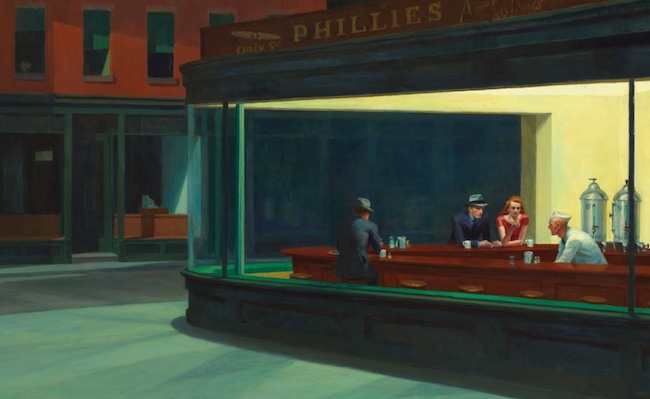
BY SCOTT STIFFLER | Imbuing his moody, muted, often cinematically composed depictions of city living with a sense of both detachment and curiosity, the artist in question seems reluctant to tell all; or anything, really, save for a few clues written in the language of shadows, light, and faces focused on avoiding eye contact. It’s tempting to declare the work of artist Edward Hopper (1882-1967) as “enigmatic” and be done with it. But that’s lazy thinking—a real conversation-stopper. Happily, there’s an alternative that’s every bit as provocative: Why not see his art your own mind’s eye?
Described by the forward-thinkers behind July 19-22’s Step Into Hopper outdoor experience as “one of the most prominent realist painters of twentieth-century America, widely known for his depictions of the urban and rural American experience,” Edward Hopper’s personal and artistic connection to NYC was explored, to revelatory results, in a 2022/2023 exhibition at the Whitney Museum of American Art. At the time, in this Chelsea Community News article, curator Kim Conaty described Edward Hopper’s New York as presented in a manner meant to “hopefully emulate the feeling of walking through the city, peering around a corner, stepping inside an interior, and emerging once again.”
Transferring what the Whitney accomplished within its walls onto the Meatpacking District’s well-trodden cobblestones, Step Into Hopper is an ambitious fusion of immersion and interaction. Built to human scale and in 3D, its take on “stepping inside an interior” allows the public to enter a trio of Hopper’s most recognizable works.
Large as life, a recreation of Nighthawks (1942) invites you to “take a seat inside Hopper’s iconic diner scene,” say the event organizers. Nearby, 1914’s Soir Bleu (Blue Evening) transports visitors “into Hopper’s introspective take on French café culture,” while Early Sunday Morning (1930) allows you to step “off the bustling streets of present-day New York City and into the stillness of this portrait of Seventh Avenue in the 1930s.” Participants are encouraged to contribute their own narrative interpretation as they walk up to, into, and out of the Hopper works set to occupy the Meatpacking District’s Gansevoort Plaza (38 Gansevoort St.) from July 19 to 22 (its closing coinciding with what would have been Hopper’s 142nd birthday).
As of 11am on Saturday/Sunday, July 20/21, a real-life barista will serve Terremoto Coffee to Nighthawks participants (while supplies last). And if you’re game, collaborate with your barista to flesh out the backstory of how you came to be highly caffenated at Phillies’ diner, be it day or night. On Friday/Saturday/Sunday, July 19-21, a clown (the friendly, funny type!) is present at the Soir Bleu experience.
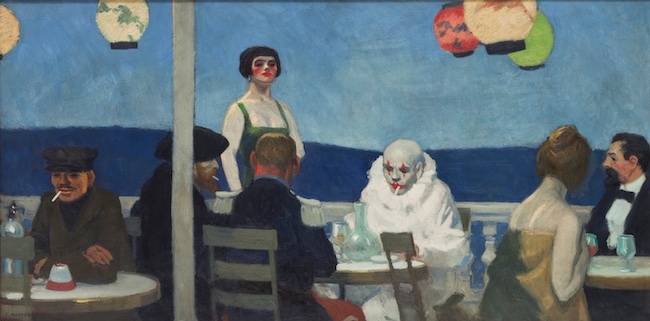
“Our hope is, through this installation—a first-of-its-kind for the neighborhood that brings a world-renown artist’s paintings to life—people are able to reimagine Hopper’s portrayal of American life and create a new work of art that reflects their diverse perspective and lived experience,” says Meatpacking BID Executive Director Jeffrey LeFrancois. Conceived by the BID and co-presented by the Whitney, LeFrancois says Step Into Hopper represents their “shared commitment to creating accessible spaces that center art where New Yorkers and visitors alike feel welcome.”
“The challenge is, how do you pay tribute to the artwork but also use a little creative license to make this concept in 3D,” said Theresa Rivera, whose Theresa Rivera Design production studio was tasked with building, from scratch, the tangible realizations of Hopper’s oil on canvas works. Key to evoking “the perspective, the isolation, the feeling you get” was rendering with fidelity Hopper’s visual tone. “I couldn’t find the exact colors that were used,” recalls Rivera, who found her sweet spot with “a little bit of gut instinct” and about 35 cans of Benjamin Moore. “You can get a pretty good match with their exterior house paint,” she noted. As for texture, a technique deployed on all three 3D recreations involved, once color was added to satisfaction, “a thick layer of plaster.” Over that, “we dragged a wire brush through the wet plaster so it gives the appearance of brush strokes.”
As for the “immersive” element—a bold promise too many art exhibits believe they achieve with little more than way-tall, too-bright video screens and headache-inducing surround sound—there will be none of that at Step Into Hopper. Rivera’s take on Nighthawks, for example, beckons with a “bench unit; a low, 10-foot-wide by about two feet deep section that’s a visual interpretation of the building façade. As you are passing through that, you enter the diner.” The three nighttime patrons are nowhere to be found—but their seats are, and they’re up for grabs. “The bar stools are physically there,” notes Rivera, adding,“We found these amazing 1930s diner coffee makers—and they are, for real, sitting on the counter along with vintage diner mugs, and salt and pepper shakers.”
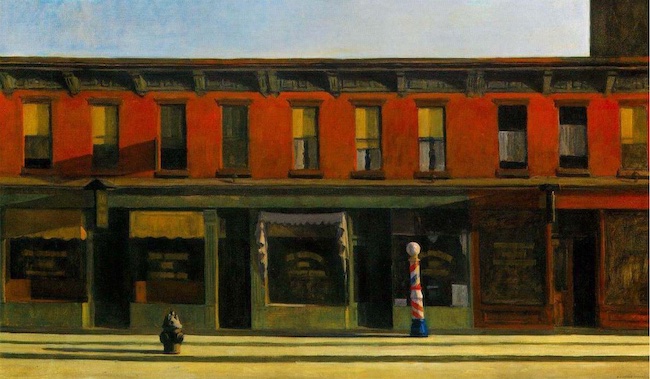
For Early Sunday Morning, Rivera opted for something other than a complete recreation. “Let’s take a section of it and blow it up,” she recalls, of an early brainstorming session that stuck. “So our Sunday Morning is a 10-foot-tall by five-foot-wide wall, that we’ve done a relief sculpture on—a true building façade.” Noting the presence of a “very small fire hydrant in the foreground” along with a barber pole whose placement and dimensions evoke the two-dimensional perspective of Hopper’s original, Rivera pronounces, “Scale is everything.”
For Soir Bleu, Rivera grafted onto it her own interpretation. “For me,” she says, “the clown is the focus of the painting. It’s the feeling they emit—that they’re off duty. I thought, ‘I have someone for that.’ ” And that is how the interactive element arrived—in the form, or person, or persona, of drag artist Tillie the Clown. Every bit as intense and potentially sassy as Hopper’s clown (whose tight, white ruffle-collar seems there for the purpose of getting a grip), Tillie, on site, will be very much on duty and happy to deliver, no matter the mood or attitude called for by the tale you conjur.
Or not. Although Step Into Hopper is calibrated to help you fill its three dimensions with your own nuanced narrative, such flights of fancy are hardly compulsory. It’s just fine if you want to strike a goofy pose or stage a series of selfies.
Got a thing for the real thing? Soir Bleu and Early Sunday Morning can be seen on the Whitney’s seventh floor, as part of the Hopper collection display that includes other paintings and sketches—all drawn from over 3,000 of the artist’s works in its collection, more than any other museum in the world. On Saturday, July 20, 10:30am-6pm, the museum hosts their annual Happy Hopper Day. It features special all-ages art projects and activities inspired by Hopper’s works (in the Museum’s Open Studio from 11am to 3pm). The celebration also includes the second annual Whitney Hopper Ride, a 60-mile round-trip bike ride from the Meatpacking District to Hopper’s birthplace of Nyack, New York. Registration is required and availability is limited. To learn more, click here.
“Step Into Hopper” is a Free Experience for All
On the Meatpacking District’s Gansevoort Plaza (38 Gansevoort St.)
Visitors Can Pass Through These Public Installations Any Time, Day or Night,
From 2pm on Friday, July 19 Through the Late Afternoon of Monday, July 22
For More Information,Visit https://meatpacking-district.com/calendar/happy-hopper-day
Below: From the Whitney’s collection, works that appeared in their
Edward Hopper’s New York exhibition (2022-2023)
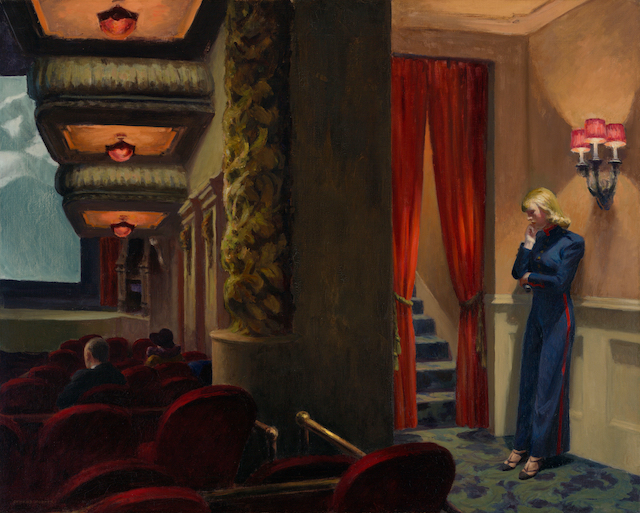
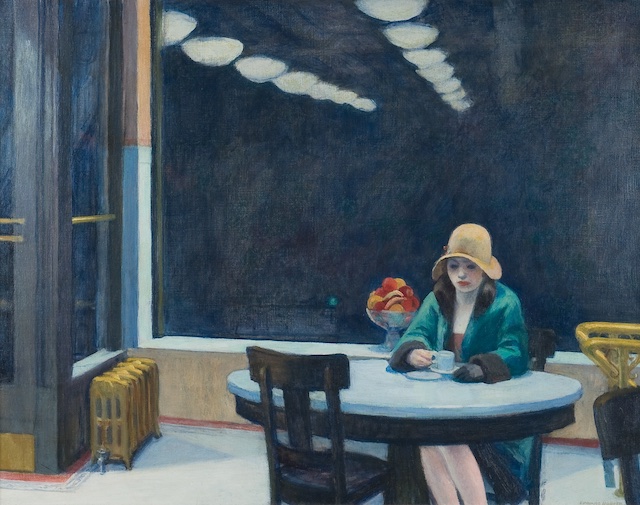

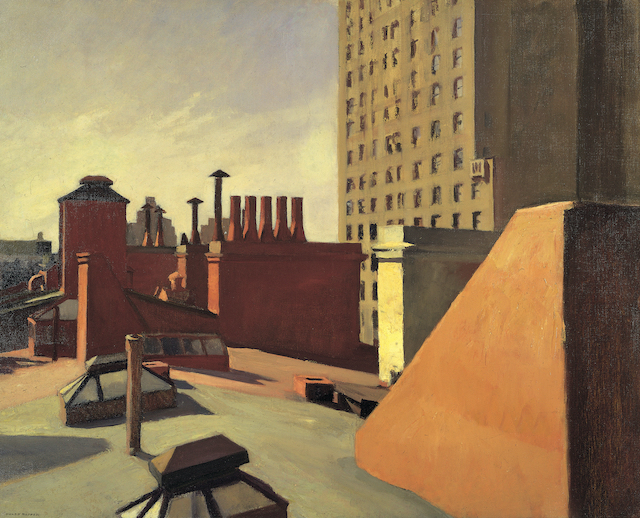
—END—
Chelsea Community News is an independent, hyperlocal news, arts, events, info, and opinion website made possible with the help of our awesome advertisers and the support of our readers. Our Promise: Never a paywall, no pop-up ads, all content is FREE. With that in mind, if circumstances allow, please consider taking part in our GoFundMe campaign (click here). To make a direct donation, give feedback, send a Letter to the Editor, or contact founder/editor, email Scott Stiffler, via scott@chelseacommunitynews.com.
To join our subscriber list, click here. It’s a free service providing regular (weekly, at least) Enewsletters containing links to recently published content. Subscribers also will be sent email with “Sponsored Content” in the subject line. That means it’s an exclusive message from one of our advertisers, whose support, like yours, allows us to offer all content free of charge.

You must be logged in to post a comment Login